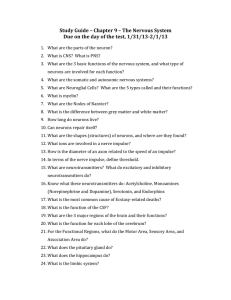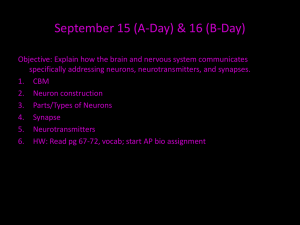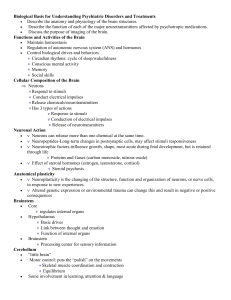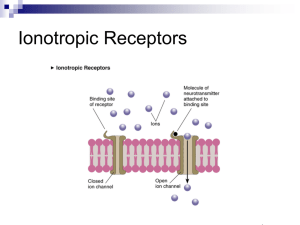2.1 Biological Level of Analysis
advertisement
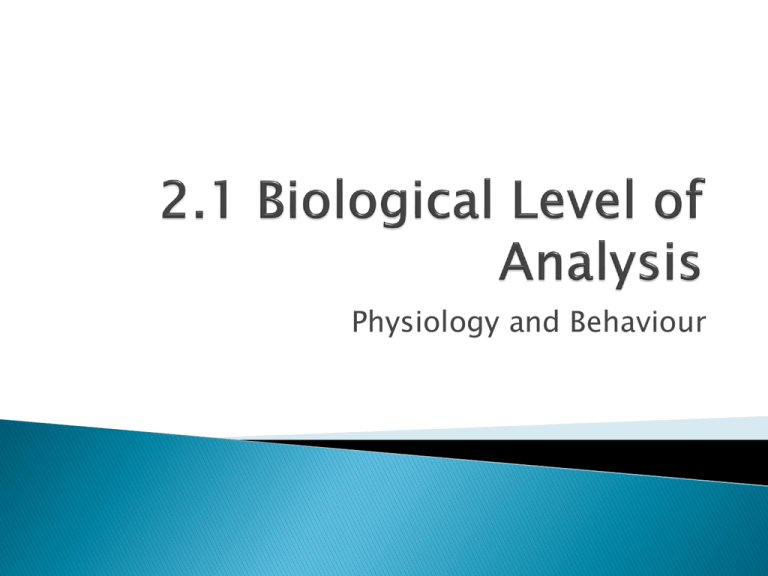
Physiology and Behaviour Nature Vs. Nurture Debate ◦ Is human behavior a result of biological or environmental factors Interactionist Approach ◦ Holistic approach to picture of human behavior (IB approach) Princ. 1: ◦ Behavior can be innate due to genetics Evolution can play a role Princ. 2: ◦ Animal research can provide insight into behavior. Princ. 3: ◦ There are biological correlates of behavior ◦ Ex. Linking a hormone to a behavior Reductionist approach ◦ Breaks down complex human behavior into its smallest parts ◦ Ex. Focusing on a gene, hormone, or protein ◦ Implication: key to understanding how several factors may interact to cause behaviors. Neurons: Nerve cells, building blocks of behavior Axon: body of neuron Neurotransmitters: body’s chemical “messengers” Synapse: gap between neurons Terminal Buttons: neurotransmitter storage Reuptake: neurotransmitters are broken down or reabsorbed. Should we attribute behaviour solely to neurotransmitters? Reduction Interactionist is more accurate How was early research of the brain conducted? Case Study: Phineas Gage ◦ Why was this study useful? ◦ Was it ethical? What did Broca and Wernicke’s studies reveal about the brain? What conclusions could be reached from this study in terms of localization of function? What could be the advantage of using fMRI in this study? Animal Research Invasive Techniques ◦ Lesioning (scarring) and ablation (removing) EEG (electroencephalogram) ◦ “brainwaves” ◦ Measures patterns of voltage in the brain ◦ Things like: sleep, emotions, epilepsy can be studied ◦ Limited: deeper regions cannot be studied doesn’t show actual functioning. Monitors glucose metabolism in the brain. colored map of brain activity Brain functioning can be observed Used to ◦ compare brain activity between groups ◦ Find tumours 3D maps of brain structures Shows actual brain activity Indicates active areas when engaged in behaviours. Higher resolution and easier than PET Ecological Validity ◦ Not natural environment Colors may exaggerate different activities of brain Areas activate for various reasons, perhaps not related to what’s being observed. The Brain changes based on external input ◦ Cerebral cortex: Higher cognitive functioning Brain Plasticity: changes in the brain resulting from experiences. ◦ High levels of stimulation and numerous learning opportunities Leads to increased density of neural connections. Dendritic branching: learning causes neurons to grow and make new connections. Fantasy and reality are very difficult to tell apart for children. TV requires not as much concentration as reading. If kids watch a lot of TV, they will get used to it and won’t be able to concentrate at school. Kids who have TVs in their rooms cannot focus on their homework because of it. Daytime sleepiness for kids is caused by late night TV watching. In the April (2001)issue of Pediatrics it says that watching an hour of TV a day increases the child's chance of developing attention problems by almost 10 percent. "The newborn brain develops very rapidly during the first two to three years of life", said Dr. Dimitri Christakis, a researcher at Children's Hospital and Regional Medical Center in Seattle. "Even educational TV can be damaging. That's because it's not the content that is the culprit," says Dr. Christakis. "It's the unrealistically fast-paced visual images that may alter normal brain development.“ http://www.odec.ca/projects/2005/zerb5m0/public_html/negEfBrain.html What did the Rosenzweig and Bennett study (1972) show about rats and stimulating environments? Can we apply this to humans? Why or Why not? Discuss the study on meditation. What are its implications. Gamma Rays: Linked to higher reasoning faculties Fires when an animal or person performs or observes somebody perform an action. Give a real world example of when you might have experienced mirror neurons in action. What are the implications of mirror neurons? Endocrine System: produces hormones Chart pg. 49 What does Oxytocin affect? What are some of its research implications? What does melatonin affect? What are its research implications? Seasonal Affective Disorder (SAD) What causes SAD? What is the potential problem with the picture?


